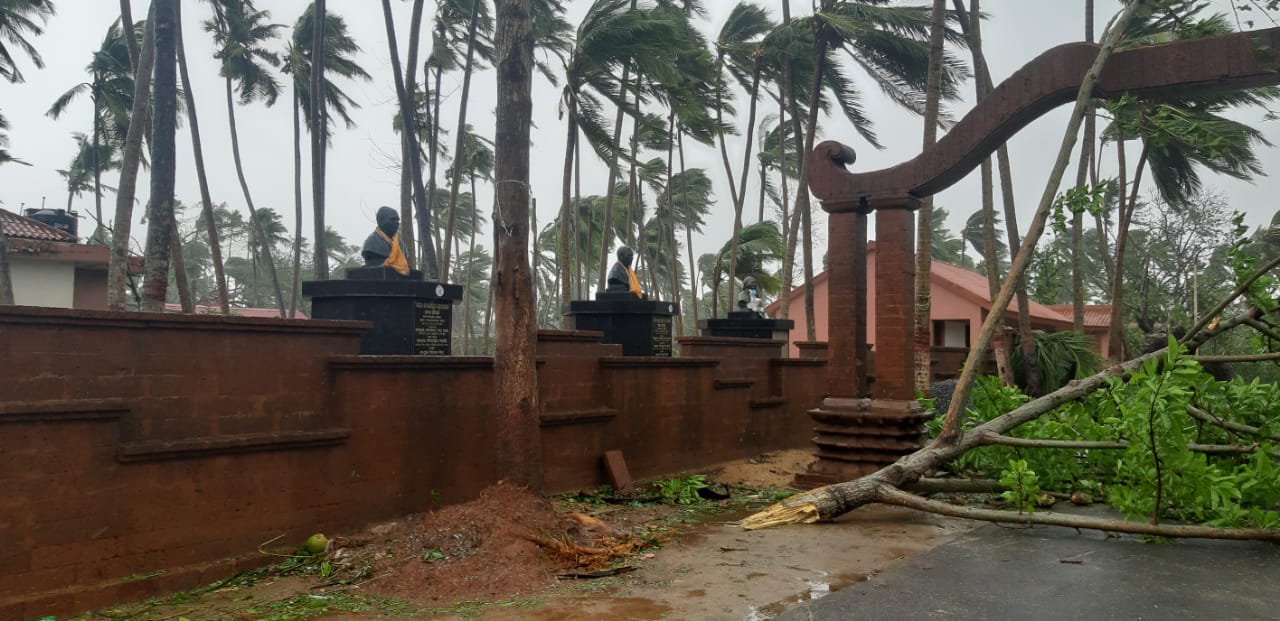Silent Disease Stalks Fani-Struck Areas In Coastal Odisha

Bhubaneswar: It’s been more than one-and-a-half months since cyclone Fani battered coastal Odisha, but a large number of the people, especially in the worst-hit areas, still continue to live in a state of hopelessness, despair, depression and the nagging fear of being hit by another calamity.
Speaking to Odisha Bytes, noted psychologist and head of Department of Psychiatry, MKCG Medical College Berhampur, Prof Ajay Kumar Mishra, said the symptoms were natural in the aftermath of a disaster of this magnitude. In some cases, they could even precipitate into post-stress mental disorder, he added. “They are undergoing a traumatic disorder. Most of them would have never experienced nature’s fury of this magnitude.”
He feared it could take as long as six months for the people to recover from the mental stress that has left them devastated inside. “They have overcome the initial stage of the psychological disorder. What I apprehend is that as they now come to comprehend the magnitude of their economic losses, they might slip into depression. For the poor, nothing can be more shocking than losing their houses and belongings.”
The symptoms:
1. Sleep disorder
2. Panic reaction
3. Personality disorder
4. Insecurity
The severe cyclonic storm that ripped apart coastal Odisha on May 3 claimed the lives of about 63 people, with Puri district being the worst hit. The disaster inflicted is being described the worst since the 1999 super cyclone.
Mongabay-India, a website which highlights issues on the environment, science and energy, reported that Satapada in Puri district was in immediate need of mental health intervention as residents were still in the grip of fear. Some have lost their sleep.
Quoting the director of Cuttack-based Mental Health Institute, Sarada Prasanna Swain, the website said: “The people are still on the edge (in Satapada) and in the absence of timely intervention, mental health issues may follow them long after the disaster.”
Dr Mishra felt that adults, in particular, needed immediate counselling as they would be more vulnerable to stress. “The little ones may not understand it all. But the cyclone will have a lasting impact on the adults.”
The only remedy is to keep the population away when cyclone is about to hit. While the State Government was alert and proactive enough this time to shift hundreds of thousands to safer places, there were still some who had to bear it out, he said.
According to a study published by the Indian Journal of Psychiatry in the aftermath of the 1999 Super Cyclone, 80.4 per cent of the people had probable psychiatric disorder while post-traumatic stress disorder was found in 44.3 per cent of the population exposed to the cyclone.
Experts feared the same might as well hold true for the population exposed to Cyclone Fani, even as an assessment is still underway.
Some of the takeaways from the study are as follows…
1. Vulnerability for the psychiatric disease was reported to be more in women, adolescents, illiterates and those with a psychiatric history.
2. It was related to the degree of exposure, resource loss and loss of relatives and the fear that parents might have died.
3. The symptoms observed after the 1999 super cyclone were:
a. Hopelessness
b. Post-traumatic stress disorder
c. Suicidal tendency
d. Stress
e. Depressive disorder
f. Anxiety disorder
4. The psychological effect of a disaster is felt more in developing countries due to the economic status of the vulnerable population, high population density and limited resources, the study said.

Comments are closed.